#toothed whale
Text

Killer whale
By: D. Faulkner
From: The Fascinating Secrets of Oceans & Islands
1972
#killer whale#dolphin#toothed whale#whale#mammal#1972#1970s#D. Faulkner#The Fascinating Secrets of Oceans & Islands
463 notes
·
View notes
Text
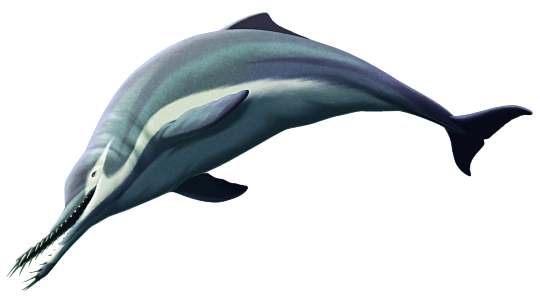
Nihohae matakoi was a dolphin that lived in the coastal waters around what is now Aotearoa New Zealand during the late Oligocene, about 25 million years ago. Part of a group known as waipatiids, it was much closer related to modern South Asian river dolphins than to modern oceanic dolphins.
Around 2m long (6'6"), it had unusually long tusk-like teeth at the front of its jaws, splaying out almost horizontally forwards and to the sides.
These teeth lay too flat to effectively interlock as a "fish trap", and their fairly delicate structure and lack of wear marks suggests they also weren't used for piercing large prey, sifting through gritty sediment, defending against predators, or for fighting each other. But Nihohae did have a highly flexible neck and the ability to quickly snap its jaws from side to side – although with a relatively weak bite force, suggesting it was primarily tackling small soft-bodied prey that could be easily swallowed whole.
Overall its feeding ecology seems to have been similar to modern sawfish, stunning prey such as squid with rapid slashing swipes of its jaws.
———
NixIllustration.com | Tumblr | Twitter | Patreon
#science illustration#paleontology#paleoart#palaeoblr#nihohae#waipatiidae#platanistoidea#dolphin#odontoceti#toothed whale#cetacean#whale#mammal#marine mammal#art#teeth#it's weird dolphin hours#fat torpedoes who scream to navigate
492 notes
·
View notes
Text

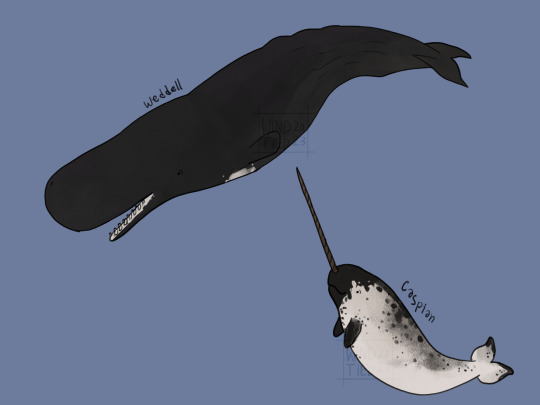


some cetacean ocs :)
#oc#art#cetacea#beaked whale#dolphin#sperm whale#baleen whale#fin whale#humpback whale#narwhal#toothed whale
82 notes
·
View notes
Text

White-beaked dolphin (Lagenorhynchus albirostris)
My friends! Behold! A new friend!!! After more than a year (no joke) without a proper commission, I had a lovely new project to work on these past weeks.
It's for Mindfully Wired Communications, a company in the UK that translates scientific information to the general public through all sorts of means. They're currently collaborating on a project to reduce bycatch in UK fisheries, and part of that is creating an ID guide for the fishermen of animals they might encounter at sea. Really important work which I'm happy to contribute to.
Most of the illustrations they needed I already had lying around. But a few had to be made anew, one of which this handsome fellow, the White-beaked dolphin! Markings wise, they are one of my favourite species of dolphin. I love the way everything on their body just flows. Also they have great whopping dorsal- and pectoral fins, and, irony of ironies, often black-marked beaks as adults.
For some reason it was quite a struggle to make him look right, but in the end I'm happy with the result. I hope you like it too, and the other friends will follow soon!
#illustrations#scientific illustration#White-beaked dolphin#dolphin#Lagenorhynchus albirostris#Lagenorhynchus#toothed whale#cetacean
54 notes
·
View notes
Text
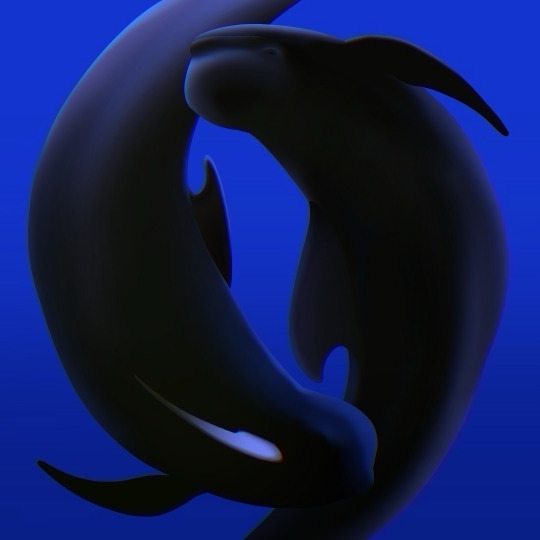
Pilot whales my beloved
23 notes
·
View notes
Photo

Amazon River Dolphin pup - it is known as the largest river dolphin and also for it’s pink coloration. Due to the murky waters of it’s environment, it depends much more on its sense of echolocation to detect prey rather than sight.
#boto#amazon river dolphin#river dolphin#dolphin#toothed whale#cetacean#land cetacean#creature#creature design#creature art#character design#character arc quiz#illustration#illustrator#watercolor#watercolor painting#painting#sketchbook#moleskine sketchbook#marine mammals#marine life#sea creatures#monster art#pink dolphin
193 notes
·
View notes
Text

Sperm Whales (Physeter macrocephalus) are the largest toothed whales alive today as well as the largest toothed predators. Male sperm whales average at 52 feet in length, with their head making up a third of that. These huge animals are some of the deepest diving marine mammals, diving to over 7,000 feet in search of their main prey, giant squid.
Sperm whales were heavily targeted by the whaling industry for a substance known as spermaceti. When it was originally discovered, whalers thought this oil was the whale's semen, hence the unfortunate name. This sperm oil is created by a gland in the whale's head and is likely used to amplify the clicks used for echolocation. This waxy substance was used to make candles or fuel oil lamps. Since commercial whaling has been banned, sperm whale numbers have increased enough that they are no longer considered endangered, but they are still vulnerable.
#sperm whale#evolution#whales#whale#whale evolution#cetacean#cetaceans#toothed whale#animal art#art#zoology
7 notes
·
View notes
Text

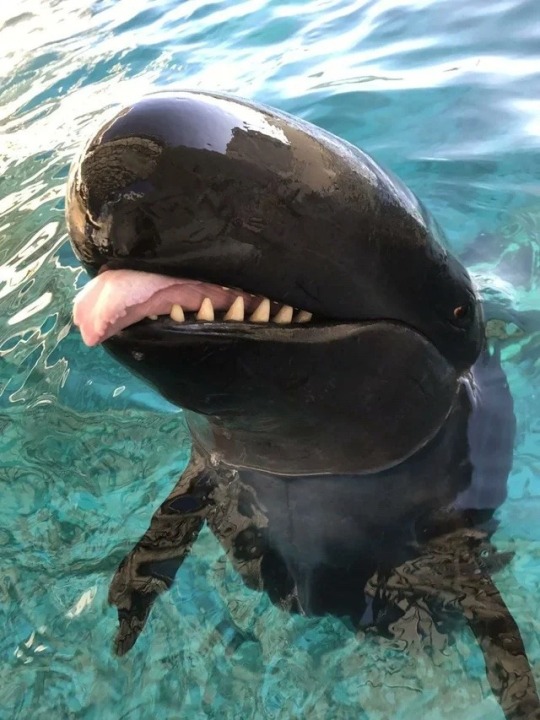
We are renaming the false killer whale (Pseudorca crassidens). Cast your vote:
#pseudorca crassidens#false killer whale#cetacean#whale#porpoise#toothed whale#pitch whale#midnight Porpoise
27 notes
·
View notes
Text
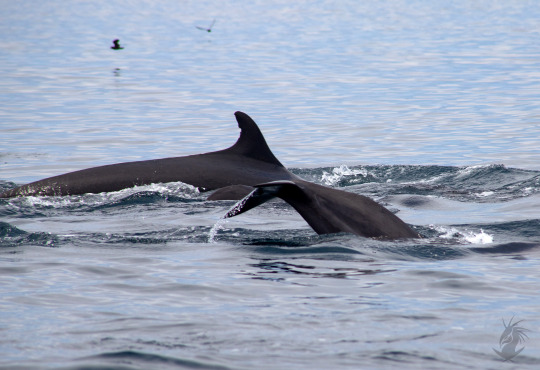
False Killer Whale (Pseudorca crassidens)
taken in the Pacific Ocean somewhere off the coast of California
status: near threatened
The name False Killer Whale might lead you to believe that these animals were named for looking similar to the more well known Orca. While they do have a dark color and a vaguely similar appearance, their dorsal fins are far shorter and they don't come close to the size of an Orca. The name comes from the appearance of their skull which is very similar structurally to an Orca's.
#False Killer Whale#Pseudorca crassidens#animal#wildlife#toothed whale#cetacean#wild animal#photo#photography#canon#canon 6D mark ii#pacific ocean#ocean
12 notes
·
View notes
Text
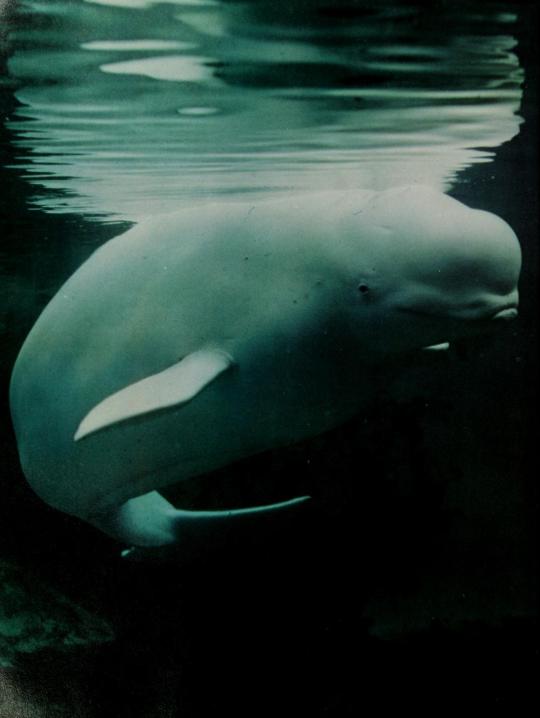
Beluga whale
By: Gerald Ferguson
From: The Fascinating Secrets of Oceans & Islands
1972
#beluga whale#toothed whale#whale#mammal#1972#1970s#Gerald Ferguson#The Fascinating Secrets of Oceans & Islands
306 notes
·
View notes
Text
Strange Symmetries #22: The Whalerus And The Twisted Tusks
Mammalian tusks usually grow in symmetrical pairs with only minor developmental asymmetry, but a few species have evolved much more uneven arrangements.

Odobenocetops peruvianus was a small toothed whale that lived during the Miocene, about 7-3 million years ago, in shallow coastal waters around what is now Peru. Around 3m long (~10'), it was a highly unusual cetacean with binocular vision, a vestigial melon, muscular lips, and a pair of tusks – features convergent with walruses that suggest it had a similar lifestyle suction-feeding on seafloor molluscs and crustaceans.
In males the right tusk was much more elongated than the left, measuring around 50cm long (~1'8") in this species and up to 1.35m (4'5") in the closely related Odobenocetops leptodon. Since these teeth were quite fragile they probably weren't used for any sort of combat, and they may have instead served more of a visual display function.
And despite being closer related to modern narwhals and belugas than to other toothed whales, Odobenocetops' long right-sided asymmetric tusks actually seem to have evolved completely independently from the iconic left-sided asymmetric spiral tusks of narwhals.
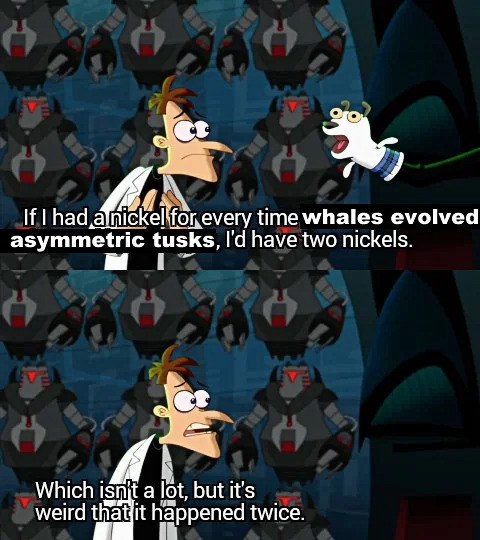
———

The woolly mammoth (Mammuthus primigenius) lived across Eurasia and North America during the last ice age, mostly from the Pleistocene about 400,000 years ago to the early Holocene about 10,000 years ago – altohugh a few relict populations survived until around 4,000 years ago in isolated areas of Alaska, Siberia, and eastern Russia.
Around 3m tall at the shoulder (~10ft), these hairy proboscideans had very long curving tusks that were used for digging out vegetation from under snow and ice, scraping bark from trees, and for fighting.
The tusks showed a lot of variation in their curvature, and were often rather asymmetrical, a condition also seen in the closely related Columbian mammoth. Like modern elephants mammoths may have also favored using one side over the other for certain tasks, which over their lifetimes could result in uneven wear exaggerating the natural asymmetry even more.
———
NixIllustration.com | Tumblr | Twitter | Patreon
#science illustration#strange symmetries#paleontology#paleoart#palaeoblr#tusks#odobenocetops#delphinoidea#odontoceti#toothed whale#cetacean#whale#artiodactyla#ungulate#marine mammal#woolly mammoth#mammuthus#elephant#proboscidea#afrotheria#mammal#art#whalerus#behold‚ a walrus!
346 notes
·
View notes
Photo
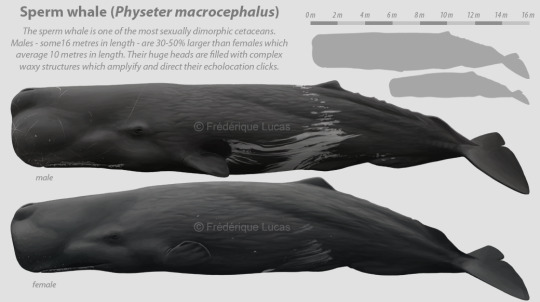
Hi guys, another long silence I know. It’s busy with the train driver’s course - on top of regular driving I’ve had training for and taken a couple more exams (all passed, thankfully). It’s coming to an end though - within a few months I should be driving independently! Looking forward to it, as well as being able to pick up drawing again.
To show I’m not dead, here’s some more illustrations from last year’s big commission: the sperm whale. Males are quite differently proportioned from females, most notably that huge head! On big bulls it can be almost 1/3 of their total length - I’ve kept it a bit more modest here because at some point it just starts looking wrong to me lol. I’m very pleased with how these came out. I feel I’ve never managed to get sperm whales right, but these two are much more to my satisfaction (especially the female). Couldn’t resist putting some elaborate markings on the male because they are just so pretty. I hope you’ll like these swimming sonar-boosters too!
#illustrations#scientific illustration#Sperm whale#Physeter macrocephalus#Physeter#Cachalot#toothed whale#whale#digital art
64 notes
·
View notes
Text

Scrimshawed whale tooth, made by a sailor, 19th century
303 notes
·
View notes
Text
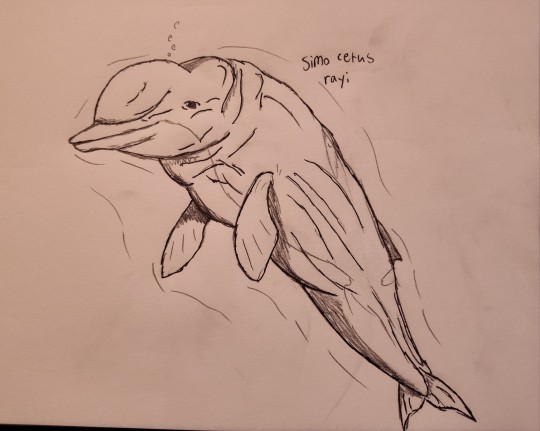
Simocetus (pug-nosed whale) is the oldest named member of the family Odontoceti, the toothed whales. Though older unnamed members existed.
Odontoceti are a very diverse group of whales that evolved alongside the baleen whales we previously discussed. Many toothed whales are known for their predatory lifestyle, echolocation abilities, and high intelligence.
Simocetus lived during the Oligocene epoch approximately 32 million years ago. Not much is known about this particular genus as it's only known from a single fossil skull, but some features of the skull suggest that it may have developed echolocation abilities comparable to its modern relatives.
#simocetus#paleoart#paleontology#evolution#whale#whales#whale evolution#toothed whale#cetacean#cetaceans#oligocene#paleogene
9 notes
·
View notes
Text
Still in awe that the vocalization organ in the forehead of cetaceans is called the melon. It’s so perfect. Nowhere is this more evident than in the squishiest motherfucker in the arctic circle: the beluga

Like, “Yep, that sure is a melon!”
29 notes
·
View notes